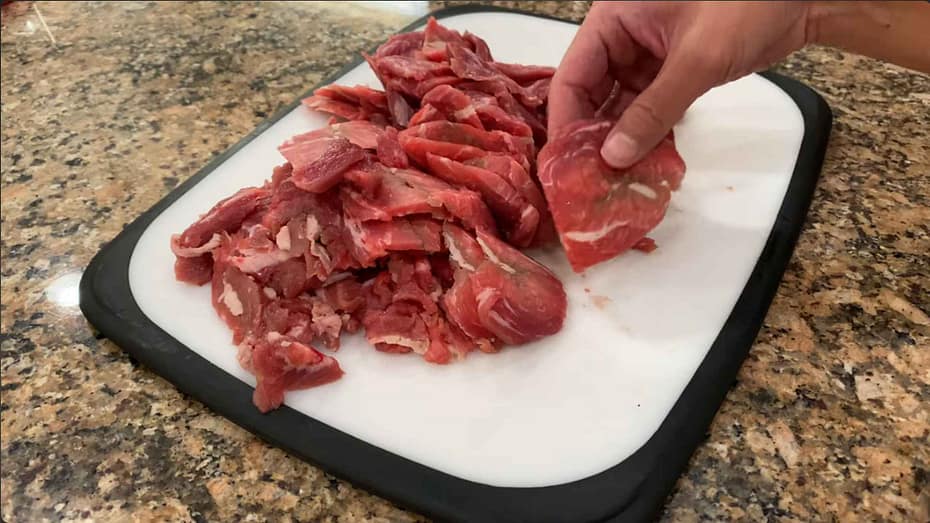Hello, fellow food enthusiasts! Today, we dive deep into the savory world of Beef Tapa, a cherished staple in Filipino breakfast tables that has captured the hearts of many across the globe. As a proud Filipino, I’m excited to share with you the rich history, unique taste, and cultural significance of this beloved dish.
What is Beef Tapa?
Tapa refers to cured or dried meat in the Philippines. Traditionally, this method was not limited to beef but also included carabao (water buffalo), deer, mutton, pork, and chicken or fish. The process involves curing the meat with salt and a blend of spices, and then drying it under the tropical sun. This technique has been a part of our culture for generations, ensuring that meat can be preserved in the heat of the Philippines.
The Evolution of Beef Tapa
Origins and Historical Significance
The roots of Beef Tapa can be traced back to the pre-refrigeration era, where curing and drying were essential for preserving meat. This method allowed our ancestors to store food for extended periods, especially in a tropical climate where food spoilage is a constant challenge.
Beef Tapa in Modern Filipino Cuisine
Over time, Beef Tapa has evolved from a preservation technique into a culinary delight. The introduction of soy sauce added a new depth of flavor while marinating the meat in calamansi juice, lemon, or vinegar helped tenderize the beef, creating a dish that is both flavorful and comforting.
A Taste of Home: The Flavor Profile of Beef Tapa
The Unique Taste of Beef Tapa
Beef Tapa is a harmonious blend of savory, slightly sweet, and tangy flavors. The curing process infuses the beef with a deep, concentrated taste, while the marination adds a citrusy tang that brightens the overall flavor profile. When fried or grilled, the edges caramelize, adding a delightful crispness that contrasts beautifully with the tender interior.
The Closest American Analogy
For those unfamiliar with Filipino cuisine, the closest American analogy to Beef Tapa might be jerky or even breakfast bacon. Like jerky, Tapa is cured and can be enjoyed as a snack. However, its preparation and serving methods resemble bacon, often served alongside breakfast items. But, Beef Tapa offers a unique taste experience that is distinctively Filipino.
Serving Beef Tapa: A Culinary Tradition
The Traditional TapSiLog
Beef Tapa is traditionally served as part of the beloved TapSiLog—a portmanteau of Tapa (Beef Tapa), Sinangag (garlic fried rice), and Itlog (fried egg). This trio is a breakfast favorite, offering a satisfying meal to start the day. Accompaniments often include fresh tomatoes or atchara (pickled papaya strips), enriching the dish with fresh and tangy flavors.
Dipping Sauces: The Perfect Complement
No serving of Beef Tapa is complete without its dipping sauce. A simple yet flavorful mix of vinegar or calamansi juice, chopped onions, salt, pepper, and sometimes chili peppers, provides the perfect balance to the rich taste of the Tapa, adding a layer of complexity that elevates the dish.
Crafting Your Own Beef Tapa
Let’s Get Cooking!
Join me as we embark on a culinary adventure to make your own Beef Tapa at home. Whether you’re a seasoned chef or a curious foodie, the process of making Tapa is a rewarding experience that brings a taste of the Philippines right into your kitchen.
Ingredients
• 2 lbs beef, thinly sliced (I used flank steak, tenderloin works fine too)
Marinade Sauce
- 6 garlic cloves, crushed, peeled, and roughly minced
- 1 tbsp brown sugar
- 1 tsp Kosher salt (use any salt of your choice)
- 1 tsp ground black pepper
- 1 tsp onion powder
- 1 tsp garlic powder
- ½ cup low sodium shoyu or soy sauce (use 1/3 cup if using regular soy sauce)
- ½ medium-sized lemon, juiced (or 1 tbsp calamansi juice)
- Cooking oil (for frying)
Garnish
- 1 stalk spring onion, finely chopped
Items You’ll Need
- Large skillet or frying pan with lid,
- Mixing bowls
- Food-grade storage bag or vacuum seal bag
- Measuring cups, and spoons. bowls
- Cutting board and knives
- Wooden spatulas
- Serving plate
- Spoon and fork
Instructions
Preparing the Beef

To begin, take 2 pounds of beef and partially freeze it. This will make it easier to thinly slice the meat against the grain. By doing so, you’ll achieve the perfect texture and tenderness in your beef tapa. Set aside the slices and allow them to defrost completely.
Making the Marinade

While the beef is defrosting, let’s prepare the marinade. Crush, peel, and mince 6 garlic cloves. Place the minced garlic in a food-grade storage bag or mixing bowl. In a separate bowl, combine 2 tablespoons of brown sugar, a teaspoon of Kosher salt, a teaspoon of ground black pepper, a teaspoon of onion powder, a teaspoon of garlic powder, half a cup of low-sodium soy sauce, and a tablespoon of lemon or calamansi juice. Mix the ingredients until well incorporated and adjust the taste according to your preference.
Marinating the Beef

Add the slices of beef to the marinade and ensure each slice is well coated. You can cover the bowl or vacuum seal it to maximize the flavor infusion. Allow the beef to marinate for at least 6 hours or overnight to achieve the best results.
Cooking the Beef Tapa

The next day, transfer the marinated beef to a bowl. Heat a tablespoon of oil in a large non-stick pan over medium-high heat. Carefully place the beef slices in the pan, making sure not to overcrowd it. Cook the beef for 2-3 minutes on each side or until golden brown. While cooking, be attentive to prevent burning and scrape off any burnt residues to avoid bitterness. Add more oil as needed and repeat the process until all the beef tapa slices are cooked.
